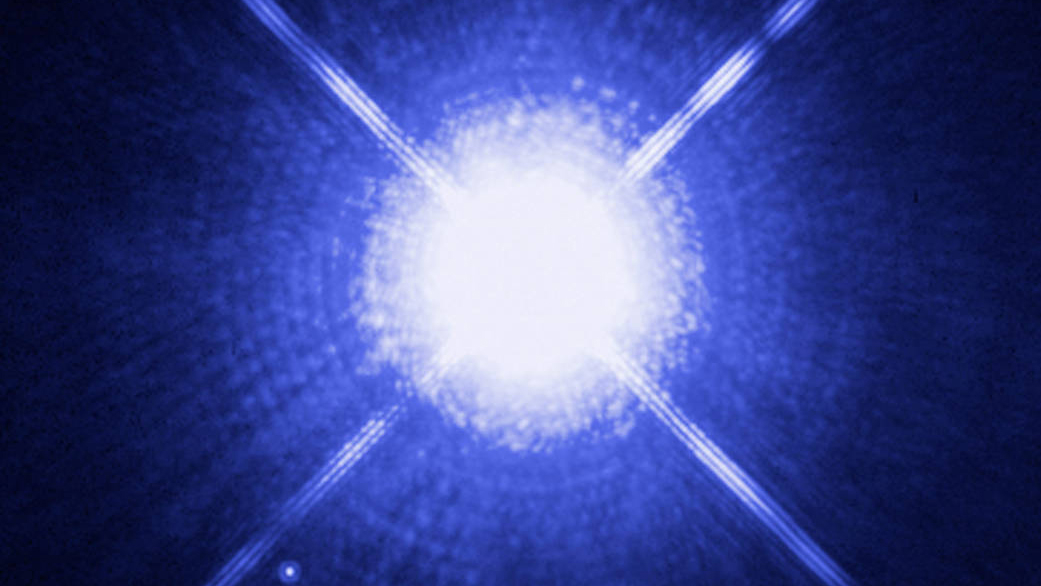The team discovered a dwarf star that could become a diamond just 104 light-years away. According to experts, it is still in the early stages of its transformation. So the star will gradually crystallize until it can evolve into a crystal at some point.
What sets this discovery apart: The team of scientists from the Universities of Southern Queensland, Victoria and Warwick and the Kavli Institute for Astrophysics and Space Research suspect that the star is in the very early stages of this transformation. But first things first.
The team named the star in its first release at the beginning of June on the “arXiv” prepress server under the title “.A crystallized white dwarf in a quadruple system, similar to Sirius(a white dwarf crystallized in a quadruple system similar to Sirius) and in the journal “Monthly Notices of the Royal Astronomical Society” under the name “White Dwarf HD 190412 C”.
This consists mainly of metallic oxygen and is part of the quaternary system called “HD 190412”. Until the discovery, the prevailing opinion of experts was that this system contained only three stars.
In addition to the quadruple system, the Australians discovered that the discovery binary star system constellation Canis Major.
A young white dwarf is usually referred to as a young star that represents the last stage in the evolution of a low-mass star. This type of star is formed by a red giant.
He has shed his outer shell. Only the core remains. According to experts, our sun will go through something similar in about six billion years.
This image shows a star slowly turning into a white dwarf. (Photo: NASA, W. Sparks, and R. Sahi)
A white dwarf is only a few thousand to ten thousand kilometers in diameter – smaller than our Earth, but equipped with the mass of our Sun and surface temperatures of only 10,000 to 100,000 degrees Kelvin. Therefore, the glow occurs mostly in white.
All stars eventually transform into something new. After the glow from nuclear fusion inside, it ran out of fuel – and this could lead to such a white dwarf in tens of billions of years. Cool because they have no additional energy sources – they end up as hypothetical black dwarfs, which can only be detected by the influence of their gravity.
With this specific finding, the scientists noticed that the cooling process was delayed. In their posting at the beginning of June, they mention that they have been able to determine the exact age for the first time. The age of the system is about 7.3 billion years. The white dwarf alone is about 4.2 billion years old.
The discrepancy is 3.1 billion years, which indicates that the crystallization rate is slower than the cooling rate of a white dwarf by about a billion years.
Cooling has an enormous effect on a star’s brightness and color. The temperature and mass profile indicate that the star will turn into a diamond. Therefore, experts assume that within a few billion years, the center of the star will evolve into a solid, dense cosmic diamond consisting of carbon and oxygen crystals.
In the first publication, the team wrote: “Because it is related to these three other main-sequence companions, this is the first crystallized white dwarf whose total age can be determined externally, a fact we take advantage of by trying to determine one through crystallization of the core to experimentally measure the resulting cooling delay in the white dwarf.” “.
“We suspect that the discovery of this system at 32 parsecs away indicates that Sirius-like systems with crystallized white dwarfs are likely numerous.”
Editor’s recommendations
The team therefore expects future discoveries to allow more accurate testing of crystallization models for white dwarfs. “We conclude that the discovery of the HD 190412 system has opened a new avenue for understanding the crystallization of white dwarfs.”

“Total coffee aficionado. Travel buff. Music ninja. Bacon nerd. Beeraholic.”







More Stories
Primatologist Goodall visits Salzkammergut
Cancer from a full time job? The study suggests connection
Stunning video recording of Comet Tsuchenshan over the Ron-Ron Channel